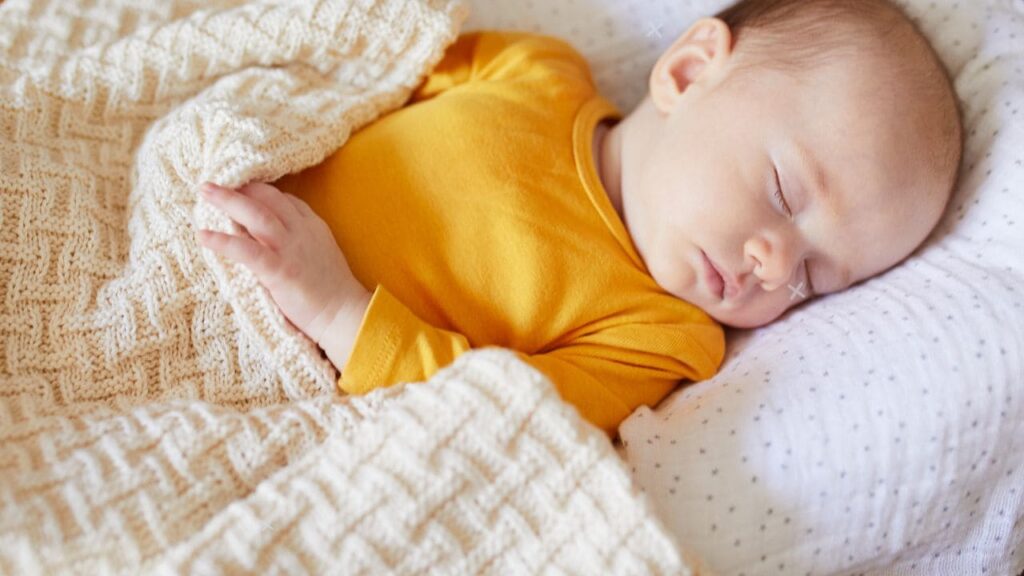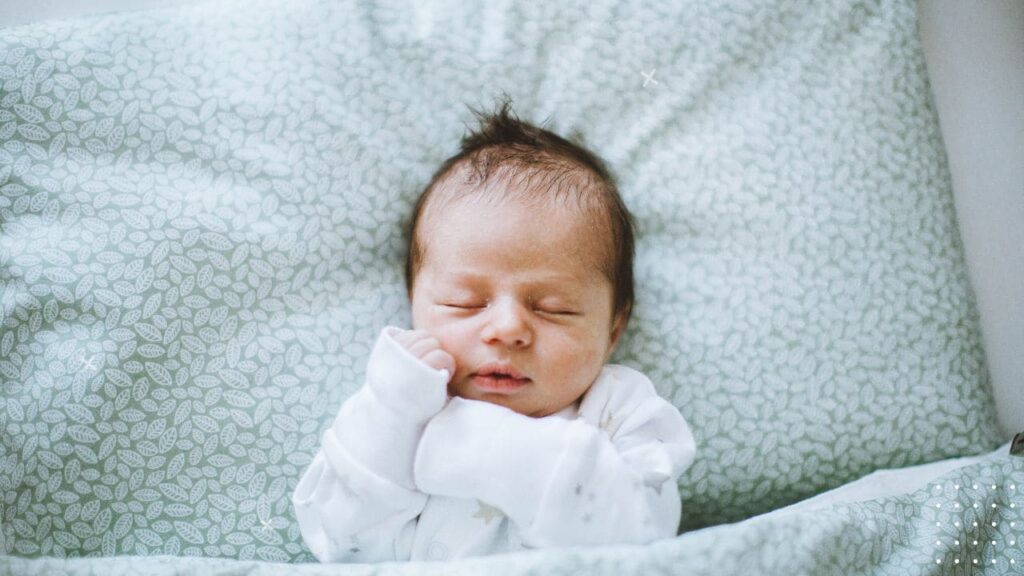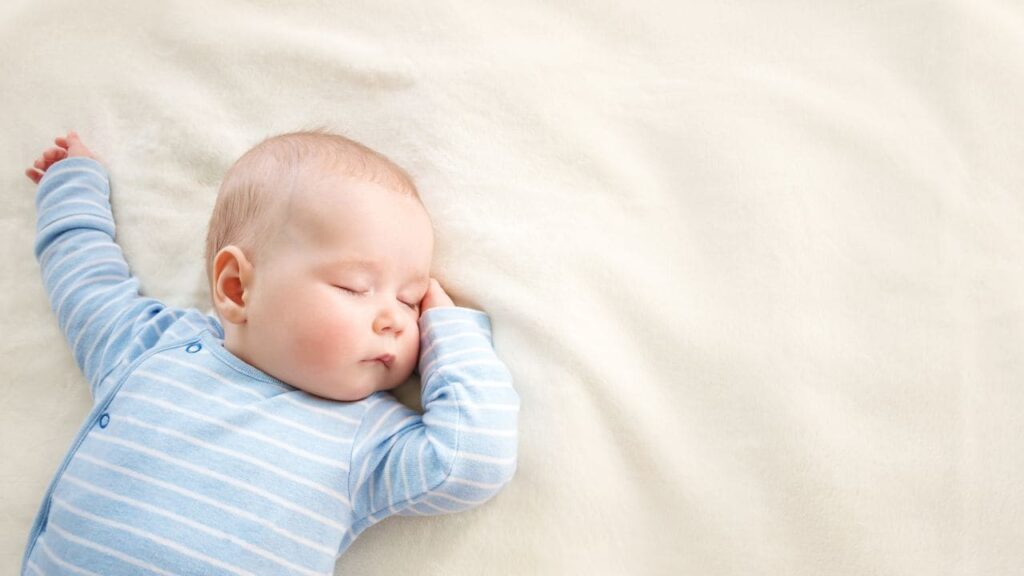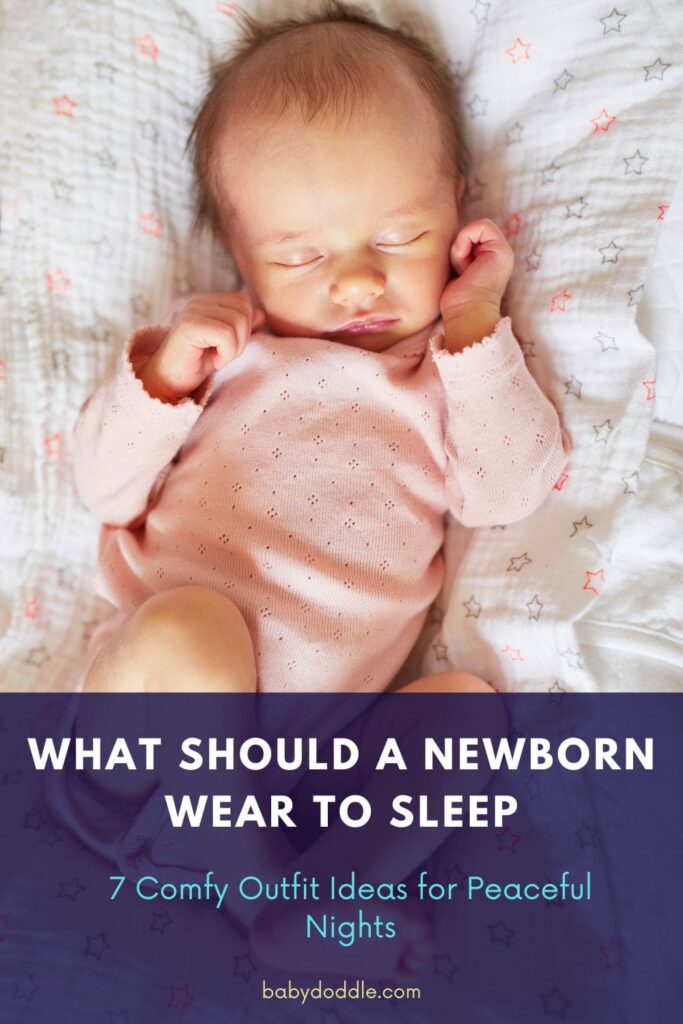Ah, the age-old question that has perplexed new parents for generations – what exactly should a newborn wear to sleep? With so many options, from swaddling blankets to footed pajamas, it can feel overwhelming trying to determine the perfect sleepwear for your little one. But fear not, weary mamas and dadas, we’re here to demystify newborn sleepwear and share 7 of the comfiest outfit ideas to ensure peaceful nights for the whole family.
You see, choosing the right sleepwear for a newborn is about more than just adorableness (although we must admit, some of these getups are downright snuggly cute). It’s a matter of safety, comfort, and ensuring your baby gets the high-quality rest they need to grow and thrive. After all, a well-rested baby typically means well-rested parents – and we can all agree that’s the dream, right?
So, let’s dive in and explore the essential factors to consider when dressing your newborn for slumber, as well as some practical and oh-so-comfy outfit options to try. By the end of this comprehensive guide, you’ll be a bonafide baby sleep fashion expert, ready to create the coziest sleep environment for your little love.

Importance of Proper Newborn Sleepwear
Before we get into the nitty-gritty of what to dress your newborn in, let’s first discuss why proper sleepwear is so crucial. You see, a newborn’s body temperature regulation is still developing, making them more susceptible to overheating or getting too cold. Dressing them in the wrong outfit can disrupt their sleep and lead to a host of other issues, from rashes to increased risk of Sudden Infant Death Syndrome (SIDS).
Additionally, certain fabrics and features can pose safety hazards, such as loose threads or buttons that could become choking hazards. And let’s not forget the importance of easy access for those middle-of-the-night diaper changes – because let’s face it, there’s nothing peaceful about a newborn who’s wide awake and ready to party at 3 am.
By taking the time to carefully select sleepwear that addresses your baby’s comfort, temperature regulation, and safety needs, you’re setting the stage for more restful nights and happier days all around. Trust us, it’s a small investment that pays off in spades!
Factors to Consider When Choosing Newborn Sleepwear
Now that we’ve established the importance of proper newborn sleepwear, let’s dive into the key factors to keep in mind when making your selections:
Temperature Regulation: Newborns are notoriously sensitive to temperature changes, so it’s crucial to choose sleepwear that will keep them comfortable throughout the night. As a general rule of thumb, the room temperature should be between 68-72°F (20-22°C) for optimal sleep. Dress your baby in one additional layer than you would wear yourself for the same environment.
| Room Temperature | Clothing Recommendation |
|---|---|
| 68-72°F (20-22°C) | 1 extra layer than what you’re wearing |
| Below 68°F (20°C) | Additional layers, such as socks, hats, or sleep sacks |
| Above 72°F (22°C) | Lighter clothing, like onesies or sleep gowns |
Fabric Selection: When it comes to newborn sleepwear, natural fabrics like cotton, muslin, and bamboo are typically the way to go. These breathable materials allow for better temperature regulation and are less likely to irritate delicate skin. Steer clear of synthetic fabrics that can trap heat or cause rashes.
Safety Features: Safety should always be the top priority when selecting newborn sleepwear. Look for options that are free of loose threads, buttons, or other small parts that could pose a choking hazard. Sleepwear should also be snug-fitting to prevent any risk of suffocation or strangulation.
Ease of Use: Let’s face it – newborns require a lot of diaper changes, nighttime feedings, and general handling. Choose sleepwear that makes these tasks as seamless as possible, such as gowns with easy-access openings or tops with snap closures.
By keeping these key factors in mind, you’ll be well on your way to creating a safe, comfortable, and practical sleep environment for your newborn. And now, let’s dive into some of our favorite outfit ideas to try!
7 Comfortable Newborn Sleepwear Outfit Ideas
- Swaddle Blankets : The traditional swaddle is a timeless choice for newborns, as it helps recreate the cozy, womb-like environment they’re used to. When done correctly, swaddling can promote deeper, more restful sleep by preventing the startle reflex. Just be sure to follow safe swaddling guidelines, discontinuing the practice once your baby shows signs of being able to roll over.
- Footed Pajamas : These cozy one-piece wonders are a go-to for many parents, as they keep little toes toasty and eliminate the need for socks. Look for footed pajamas made from breathable fabrics like organic cotton, and ensure they have a snug, but not restrictive, fit.
- Sleep Sacks : Also known as wearable blankets, sleep sacks provide the warmth of a blanket without the risk of loose bedding. They come in a variety of tog (thermal overall grade) ratings to accommodate different room temperatures, and many feature arm holes or zippers for easy diaper changes.
- Kimono-Style Tops : These easy-to-use tops with snap or tie closures make middle-of-the-night feedings and diaper changes a breeze. Pair them with simple bottoms for a comfy, customizable sleep ensemble.
- Gowns : For ultimate flexibility and convenience, consider dressing your newborn in a soft, comfortable gown. The open bottom design allows for quick diaper changes, while the loose, flowing fit promotes unrestricted movement and temperature regulation.
- Two-Piece Sets : Mix-and-match tops and bottoms give you the ability to fine-tune your newborn’s sleepwear for optimal comfort. Opt for coordinating sets in breathable fabrics for a put-together look that’s also practical.
- Organic Cotton Separates : When in doubt, you can’t go wrong with simple, high-quality separates in 100% organic cotton. These versatile pieces can be layered or worn alone depending on the room temperature, and they’re oh-so-gentle on delicate skin.
Dressing for Different Seasons
While the core principles of newborn sleepwear remain the same year-round, there are some seasonal considerations to keep in mind. Let’s explore how to adjust your little one’s bedtime outfits for both summer and winter:
Summer Nights: During the warmer months, aim for lightweight, breathable fabrics like muslin or bamboo. Footed pajamas may be too warm, so consider gowns, short-sleeved onesies, or even just a diaper with a light swaddle or sleep sack. The key is to avoid overheating, which can disrupt sleep and increase the risk of SIDS.
Winter Wonders: When the temperatures start to drop, you’ll want to layer up your newborn to ensure they stay cozy and comfortable throughout the night. Think long-sleeved footed pajamas, fleece sleep sacks, and even a lightweight hat to retain body heat. Just be mindful of overheating, and adjust layers as needed.
No matter the season, the goal is to strike a delicate balance between keeping your newborn warm enough to sleep soundly without causing them to overheat. Experiment with different fabric weights and layering techniques to find the perfect formula for your little one.

Recognizing Signs of Discomfort
As parents, we all want our newborns to be as comfortable as possible, but sometimes it can be tricky to know if their sleepwear is truly meeting their needs. That’s why it’s important to be on the lookout for telltale signs of discomfort or distress, such as:
- Excessive fussiness or crying during or after sleep
- Rapid breathing or sweating
- Rashes, redness, or irritation on the skin
- Hands or feet that feel overly warm or cold to the touch
If you notice any of these issues, it may be a sign that your newborn’s sleepwear isn’t quite right. This could be due to factors like fabric, fit, or room temperature. Pay close attention to your baby’s cues and be prepared to adjust their outfit or the environment accordingly.
Remember, every newborn is unique, so what works perfectly for one little one may not be the ideal solution for another. Trust your parental instincts and don’t hesitate to consult your pediatrician if you have any ongoing concerns about your newborn’s comfort or sleep quality.
Transitioning Beyond the Swaddle
For many new parents, the trusty swaddle is a lifesaver in those early months. However, it’s important to know when and how to transition your newborn out of this cozy cocoon and into other sleepwear options.
The general guideline is to stop swaddling once your baby shows signs of being able to roll over, typically around 2-4 months of age. At this point, the risk of the swaddle becoming a suffocation hazard outweighs the benefits.
To make the transition as smooth as possible, try gradually introducing sleep sacks or footed pajamas while still swaddling your newborn’s arms. This allows them to get comfortable with the new sensation of having their limbs free while still feeling the comforting compression of the swaddle.
Pay close attention to your baby’s sleep cues and be prepared to adjust the timing of the transition if they seem to be struggling. Some infants may adapt quickly, while others may need a more gradual approach. The key is to listen to your newborn and make adjustments as needed to ensure they continue getting the high-quality rest they need.
| Newborn Age | Swaddle Recommendation |
|---|---|
| 0-2 months | Full-body swaddle |
| 2-4 months | Transitional swaddle (arms free) |
| 4+ months | Discontinue swaddle, use sleep sacks or pajamas |
Dressing for Daycare or Childcare
When your newborn starts attending daycare or spending time with a childcare provider, there are a few additional factors to consider when choosing their sleepwear:
Ease of Diapering: Look for sleepwear that makes diaper changes quick and simple, such as gowns or snap-front pajamas. This will help the caregivers maintain a smooth routine and minimize disruptions to your baby’s sleep.
Labeling and Identification: Be sure to label all of your newborn’s clothing, including sleepwear, with their name or initials. This will prevent mix-ups and ensure their belongings make it home at the end of the day.
Consistency with Home Routine: Try to send your newborn to daycare in sleepwear that is similar to what they wear at home. This will help them feel comfortable and maintain their familiar sleep associations.
Communicating with Caregivers: Have an open dialogue with your daycare providers about your newborn’s sleep needs and preferences. Provide guidance on appropriate room temperatures, layering techniques, and any special considerations.
By addressing these childcare-specific factors, you can help ensure your newborn’s sleepwear needs are met, even when they’re away from home.
| Consideration | Recommendation |
|---|---|
| Ease of Diapering | Gowns or snap-front pajamas |
| Labeling | Name or initials on all clothing |
| Consistency with Home | Similar to home sleepwear |
| Communication with Caregivers | Discuss temperature, layers, and special needs |
Selecting Sleepwear for Preemies or Babies with Special Needs
Newborns with unique medical conditions or developmental factors may require specialized sleepwear to ensure their safety and comfort. If your little one was born prematurely or has any special needs, it’s important to work closely with your pediatrician to find the appropriate sleepwear options.
For preemies, you may need to choose sleepwear that provides additional warmth and support, such as specially designed sleep sacks or footed pajamas with built-in temperature regulation. These features can help maintain the ideal body temperature and promote restful sleep.
Similarly, babies with conditions like eczema, sensory processing disorders, or physical disabilities may benefit from sleepwear made with hypoallergenic, soft fabrics that won’t irritate their skin or restrict their movement. Your pediatrician can provide guidance on the best materials and designs to accommodate your baby’s unique needs.
Keep in mind that the transition process from swaddles or specialized sleepwear may also look different for infants with special needs. Be prepared to work closely with your healthcare team to ensure a smooth and safe transition as your baby grows.
By addressing the specific requirements of your newborn, you can create a sleep environment that promotes both comfort and safety, setting them up for the high-quality rest they need to thrive.

Sleepwear Safety Considerations
While choosing the right sleepwear for your newborn is crucial, it’s equally important to prioritize safety. Here are some key factors to keep in mind when evaluating the safety of any sleepwear option:
Fit and Fabric: Ensure the sleepwear has a snug, but not restrictive, fit to prevent any risk of suffocation or strangulation. Avoid loose threads, buttons, or other small parts that could become choking hazards. Opt for breathable, natural fabrics like cotton or muslin.
Flammability: Check that the sleepwear meets current safety standards for flammability. Look for the “flame-resistant” or “flame-retardant” label, which indicates the fabric has been treated to slow the spread of fire.
Positioning and Bedding: Position your newborn on their back to sleep, and avoid any loose bedding, pillows, or soft objects that could obstruct their breathing. Ensure the sleep environment is free of suffocation risks.
Temperature Regulation: Dress your baby in the appropriate layers to maintain a comfortable, safe body temperature. Avoid overheating, which can increase the risk of SIDS.
By prioritizing safety alongside comfort and practicality, you can create a peaceful, secure sleep environment for your precious little one. If you have any concerns, don’t hesitate to consult your pediatrician for personalized guidance.
When to Seek Professional Advice
Of course, every baby is unique, and there may be times when you need to consult a medical professional regarding your newborn’s sleepwear and sleep habits. Here are a few signs that it’s time to reach out to your pediatrician:
Persistent Discomfort or Distress: If your newborn seems consistently uncomfortable or distressed in their sleepwear, despite your best efforts to find the right fit and fabric, it’s wise to have them evaluated. There may be an underlying medical condition or sensitivity that requires specialized attention.
Unique Needs or Considerations: Certain medical conditions or developmental factors may require specialized sleepwear to ensure your newborn’s safety and comfort. Your pediatrician can provide guidance on any unique needs and recommend appropriate options.
Concerns About Sleep Quality: If you notice your newborn is struggling to achieve the recommended 14-17 hours of sleep per day, or if their sleep is frequently disrupted, it’s a good idea to discuss your concerns with their healthcare provider. They can help rule out any issues and provide personalized advice.
Remember, your pediatrician is there to support you and your newborn, so don’t hesitate to reach out if you have any questions or concerns about their sleep and sleepwear needs. With their expert guidance, you can feel confident that you’re providing the best possible environment for your little one to rest and thrive.
Conclusion: Prioritizing Newborn Comfort and Safety for Peaceful Nights
As you can see, dressing a newborn for sleep is about so much more than just finding the cutest outfit. It’s a delicate balance of comfort, safety, and practicality – all with the goal of ensuring your little one gets the high-quality rest they need to grow and develop.
By keeping the key factors we’ve discussed in mind, such as temperature regulation, fabric selection, and safety features, you can create a sleep environment that promotes optimal comfort and security for your newborn. And with the 7 cozy outfit ideas we’ve shared, you’ll have a range of practical, yet stylish, options to try.
Remember, every baby is different, so don’t be afraid to experiment until you find the perfect sleepwear formula for your little one. Trust your instincts, stay vigilant about safety, and enjoy the process of discovering what works best. After all, a well-rested baby means well-rested parents – and that’s a win-win in our book!
So, take a deep breath, mama and dada, and remember that with a little trial and error, you’ve got this. Sweet dreams are just around the corner.
FAQ- What Should A Newborn Wear To Sleep
What is the ideal room temperature for newborns to sleep?
The ideal room temperature for newborns to sleep is between 68-72°F (20-22°C). At this temperature range, you can dress your baby in one additional layer than what you would wear yourself. If the room is cooler, you may need to add layers like socks, hats, or a sleep sack. Conversely, if the room is warmer, you’ll want to use lighter clothing like onesies or sleep gowns to prevent overheating.
What are the best fabrics for newborn sleepwear?
When it comes to newborn sleepwear, natural fabrics like cotton, muslin, and bamboo are generally the best options. These breathable materials allow for better temperature regulation and are less likely to irritate delicate skin. Synthetic fabrics like polyester or nylon, on the other hand, can trap heat and be more prone to causing skin irritation.
How do I safely transition my newborn from a swaddle to other sleepwear?
The general guideline is to stop swaddling once your baby shows signs of being able to roll over, typically around 2-4 months of age. To make the transition smooth, try gradually introducing sleep sacks or footed pajamas while still swaddling your newborn’s arms. This allows them to get comfortable with the new sensation of having their limbs free while still feeling the comforting compression of the swaddle. Pay close attention to your baby’s sleep cues and adjust the timing of the transition as needed.
What are some key considerations when dressing a newborn for daycare or childcare?
When sending your newborn to daycare or leaving them with a childcare provider, there are a few important factors to keep in mind. Look for sleepwear that makes diaper changes quick and easy, such as gowns or snap-front pajamas. Be sure to label all of your baby’s clothing, including sleepwear, to prevent mix-ups. It’s also best to dress your newborn in sleepwear similar to what they wear at home to maintain their familiar sleep associations. Finally, have an open dialogue with the caregivers about your baby’s sleep needs and preferences.
What are some signs that my newborn’s sleepwear may not be suitable?
If you notice your newborn exhibiting any of the following signs, it may be an indication that their sleepwear is not meeting their needs:
- Excessive fussiness or crying during or after sleep
- Rapid breathing or sweating
- Rashes, redness, or irritation on the skin
- Hands or feet that feel overly warm or cold to the touch
Pay close attention to your baby’s cues and be prepared to adjust their outfit or the room temperature accordingly. If the issues persist, it’s a good idea to consult your pediatrician for personalized guidance.












